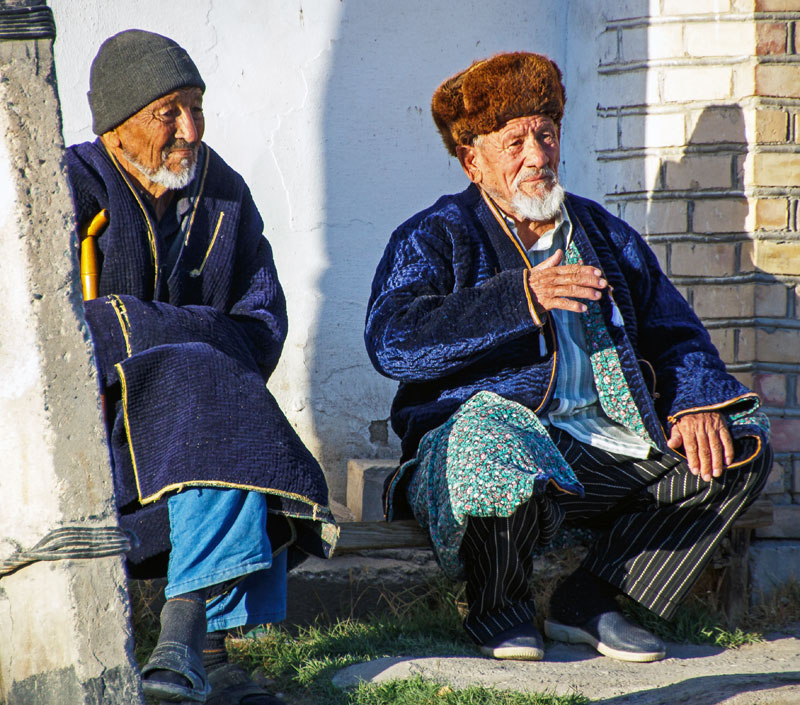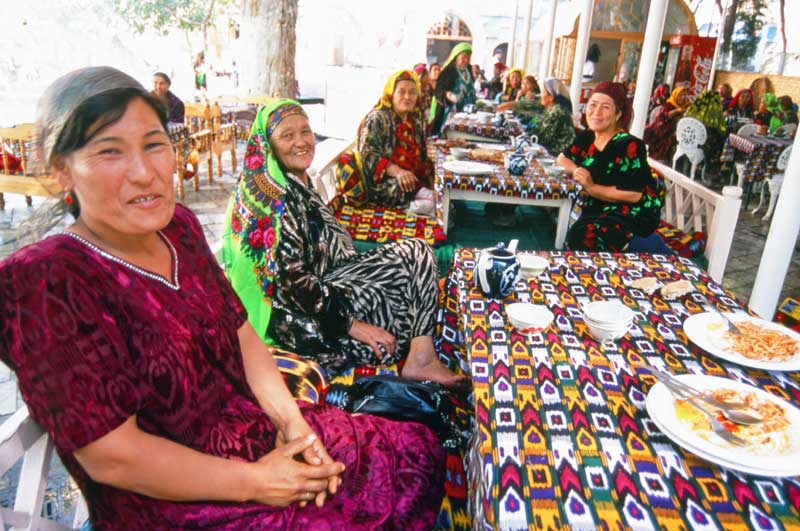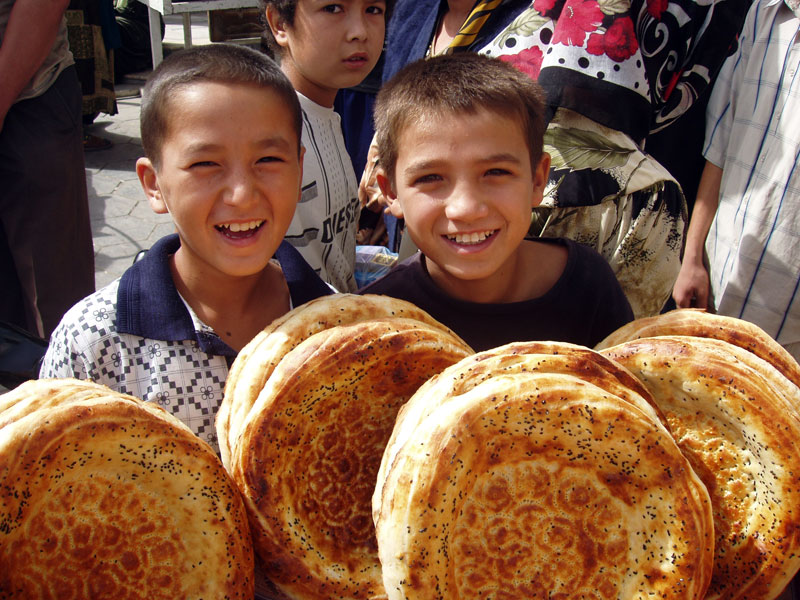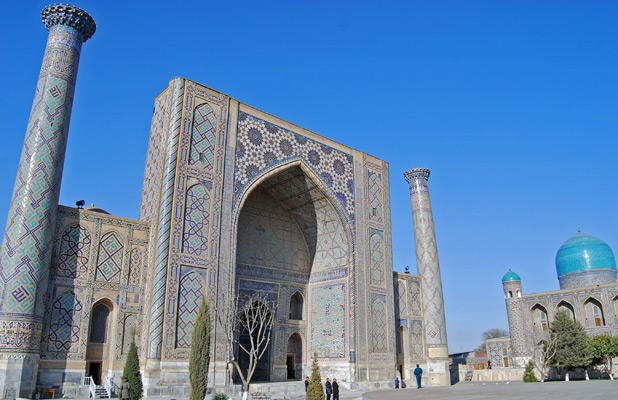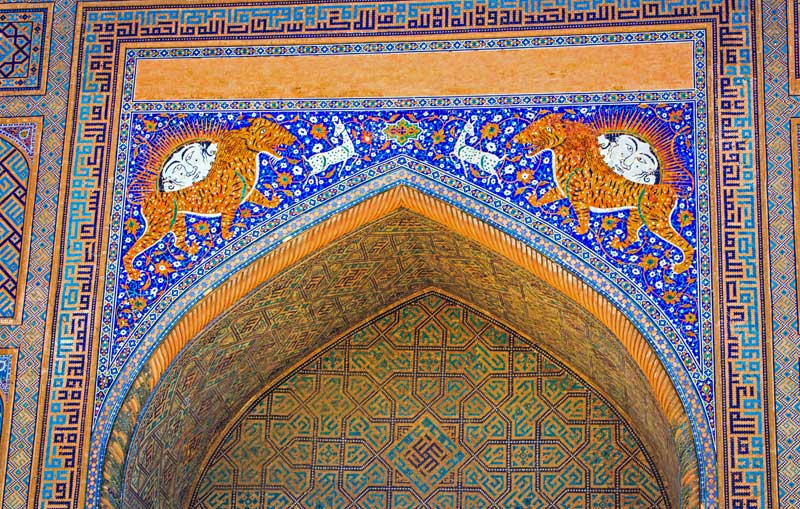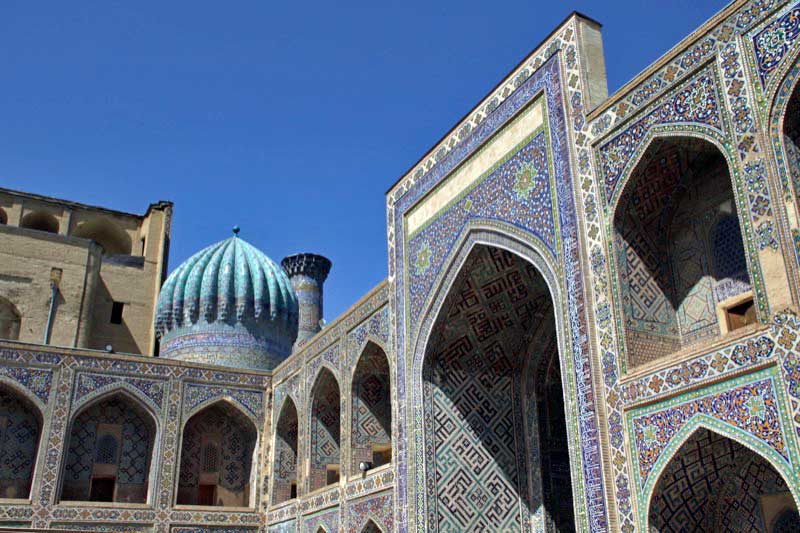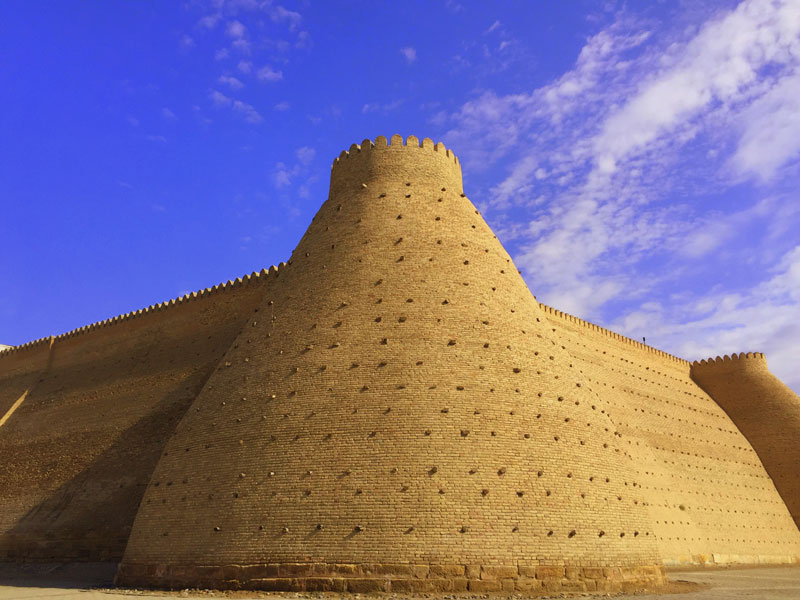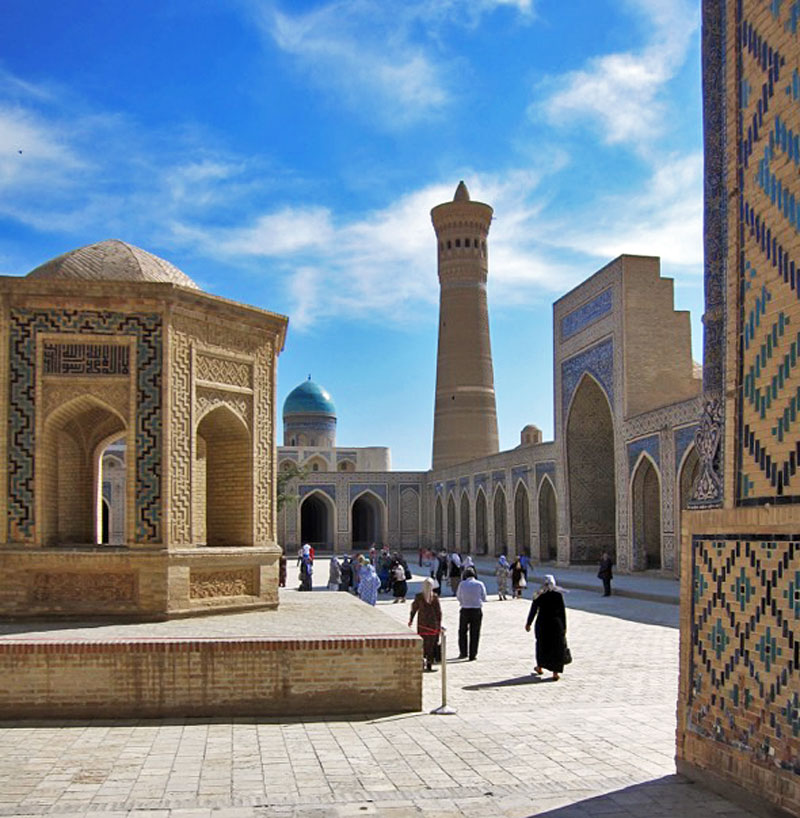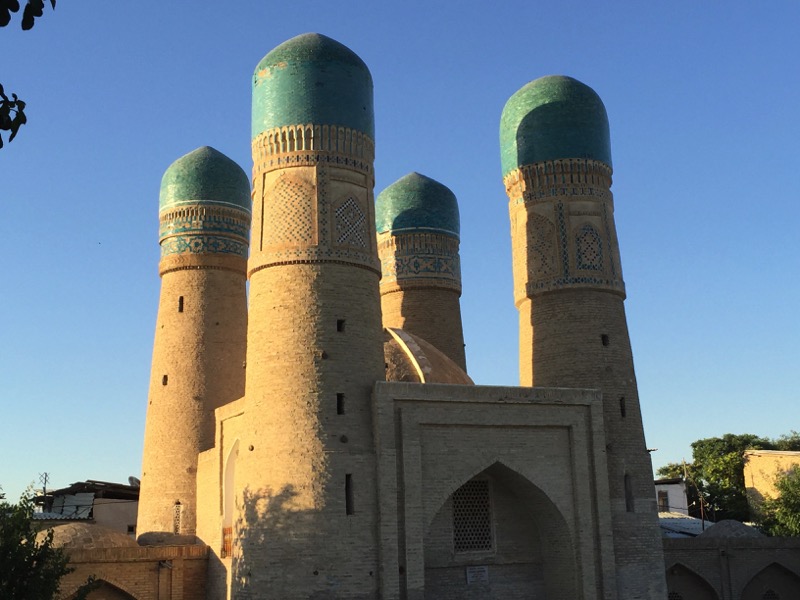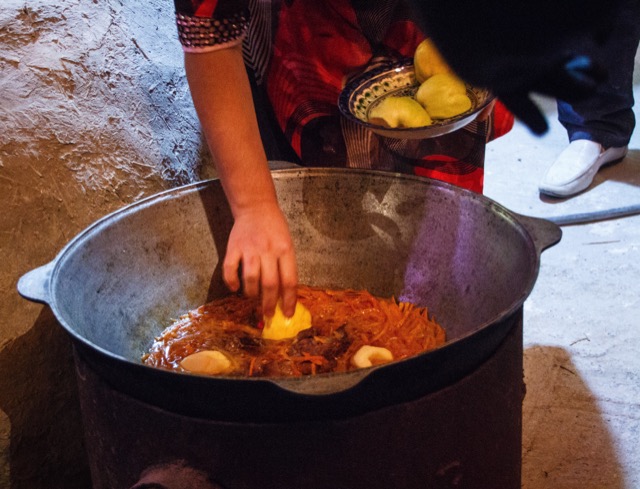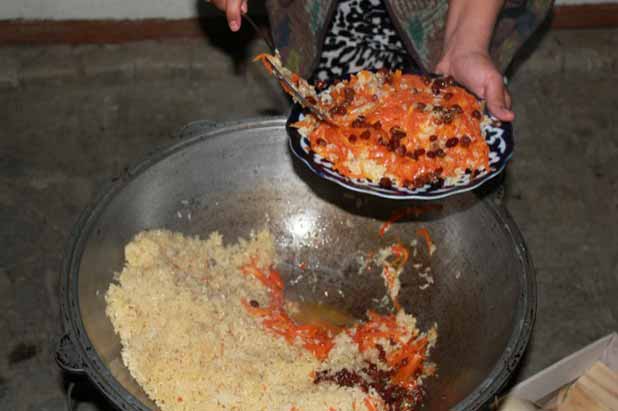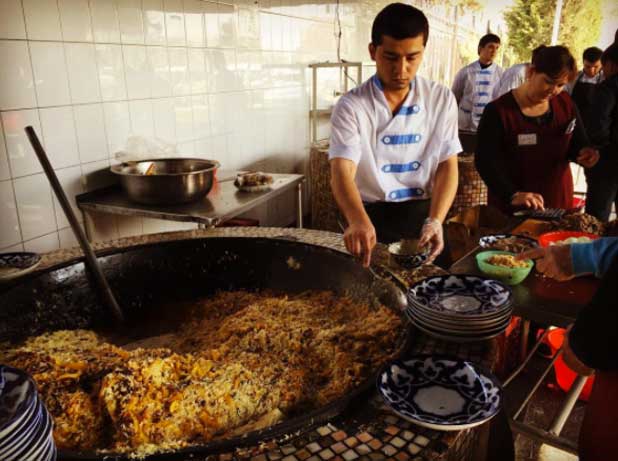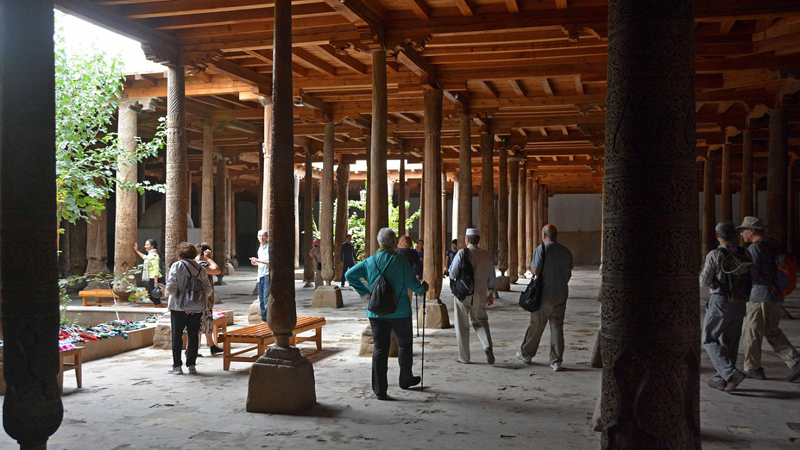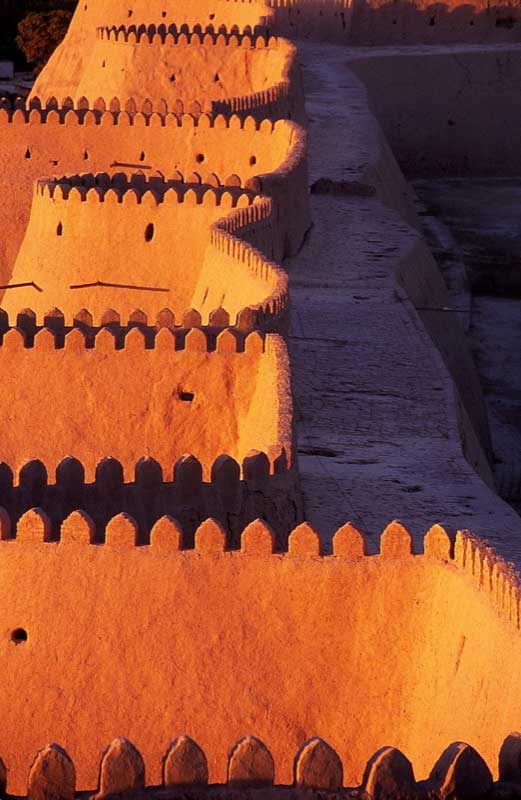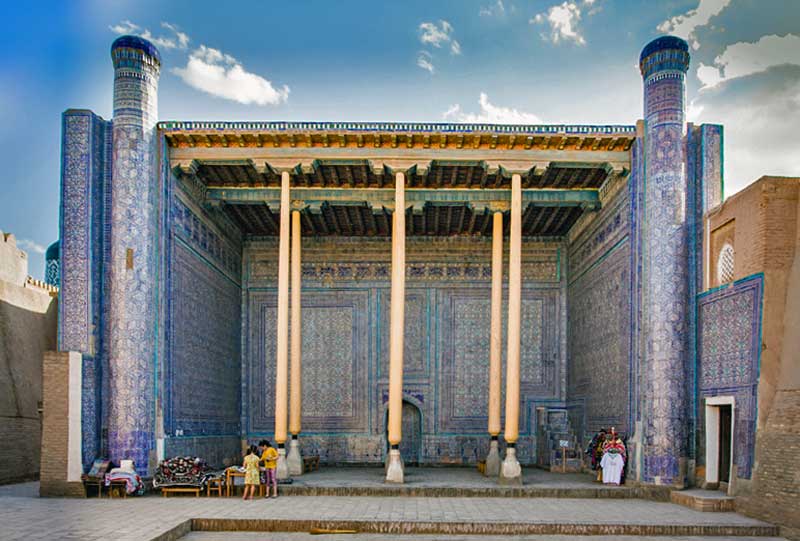A quest for the quintessentially best in world travel can yield remarkable, thought-provoking experiences. Some travelers find such experiences in historic or natural UNESCO-listed World Heritage Sites, as well as with cultural treasures inscribed on the UNESCO Intangible Cultural Heritage List.
Among these UNESCO listings in 167 countries is an intriguing subset, ones that are threatened by climate change (accelerated erosion of Cappadocia's rock formations in Turkey); or difficult to get to (Koguryo Tombs, North Korea); or utterly pristine (Plitvice Lakes in Croatia); or cradling ruins and architecture that kindle one's imagination of glory days long ago (Persepolis and Isfahan in Iran).
The ancient UNESCO-listed Silk Road city of Khiva is often called a “living museum” where history is lived in, even now
Photo credit: Peter Guttman
An Ancient Country, Rediscovered
There is a such a UNESCO-treasured country that incorporates all of these: Uzbekistan. Located in Central Asia, Uzbekistan is capturing international attention and an uptick in travelers, especially to its outstanding UNESCO sites and cultural heritage treasures – ranging from the Silk Road oasis of Samarkand and pristine Western Tien Shan Mountains to the art of making plov and weaving silk.
After decades of isolation and mounds of red tape just to visit this country, today thanks to a dizzying speed of travel-friendly changes under a new reform-minded government intent on sharing this country with the rest of the world, Uzbekistan beckons. With e-visas, high-speed trains, new restaurants and hotels, this former Soviet republic is ready for prime time. Now is an excellent time to add this once-obscure Silk Road nation and its UNESCO trove of sights and experiences to your travel bucket list. Uzbekistan is still relatively uncrowded with visitors, offering true authenticity and open-handed hospitality.
Here are 8 breathtaking ways to experience UNESCO treasures in Uzbekistan:
1) Site: Silk Road’s Heart, Samarkand 5) Site: Khiva’s Living Past
2) Intangible: Celebrate Navruz 6) Intangible: Margilan’s Silk Road Silk
3) Site: Bukhara Beckons 7) Site: A Royal City, Shahrisabz
4) Intangible: Plates of Plov 8) Intangible: Shashmaqom Music
With its three madrassahs – Ulug Bek, Tillya-Kori, and Shir-Dor – the Registan is arguably the iconic symbol of all Central Asia
Photo credit: Abdu Samadov
1) UNESCO Site: Samarkand, the Silk Road’s Heart
Considered the “heart of the heart of the Silk Road” and one of the oldest cities in the world, Samarkand has captured the imagination of storytellers, poets, sojourners, and travelers for thousands of years. Its iconic Registan (“Sandy Place”) is the town’s main square, and considered a masterpiece of Persian architecture.
For centuries, the Registan has been a gathering place for local residents as well as sojourners on the Silk Road
Photo credit: Donovan Wong
* MUST-SEE:
Three tiled madrassahs harmoniously ring the Registan: On the western side is the original 1420 Ulug Bek Madrassah, named for the brilliant mathematician, astronomer, and Timurid sultan, with its tiled portal depicting the sky and stars. On the eastern side is the restored 1636 Shir-Dor (“Lions”) Madrassah, decorated with mosaics of lions, deer, and controversial rising suns. Between the two is Tillya-Kori (“Gilded”) Madrassah, built on the site of a caravanserai in 1660, and embedded with gold leaf and glazed tiled mosaics with geometric and floral motifs.
(click on photo for larger image and caption)
Other UNESCO top sights in Samarkand include: Bibi-Khanum Mosque, Gur-Emir (“Tomb of the King”) Mausoleum, and Shah-i-Zinda (“The Living King”) Necropolis Complex with its royal tombs and mausoleums.
Intricately detailed Uzbek costumes – worn here for Navruz – are often handed down from mother to daughter
Photo credit: Abdu Samadov
2) UNESCO INTANGIBLE: CELEBRATE NAVRUZ
Uzbekistan is a grand place to celebrate the vibrant springtime festival of Navruz! The lively Silk Road cities of Samarkand, Bukhara, and Khiva are renowned for pulling out all the stops for this UNESCO-listed, multi-day beloved holiday welcoming spring and the beginning of a new year.

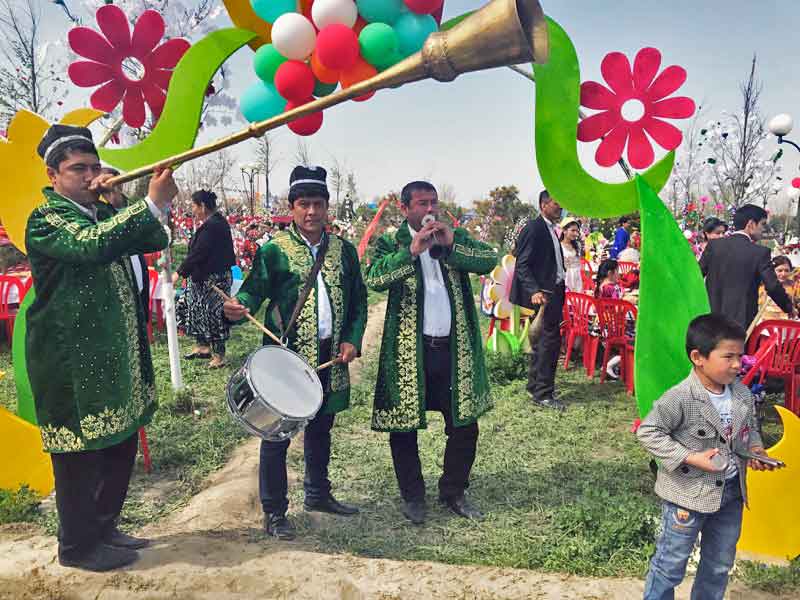
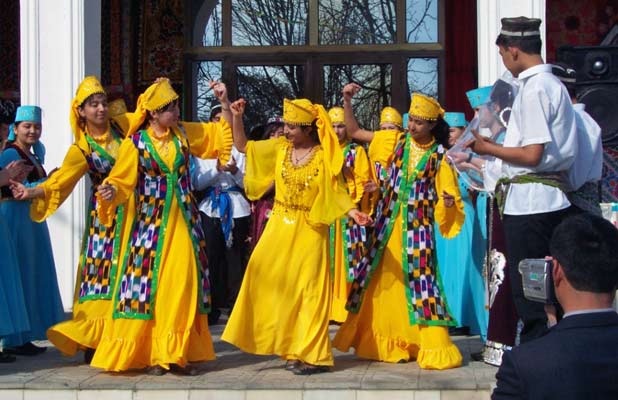

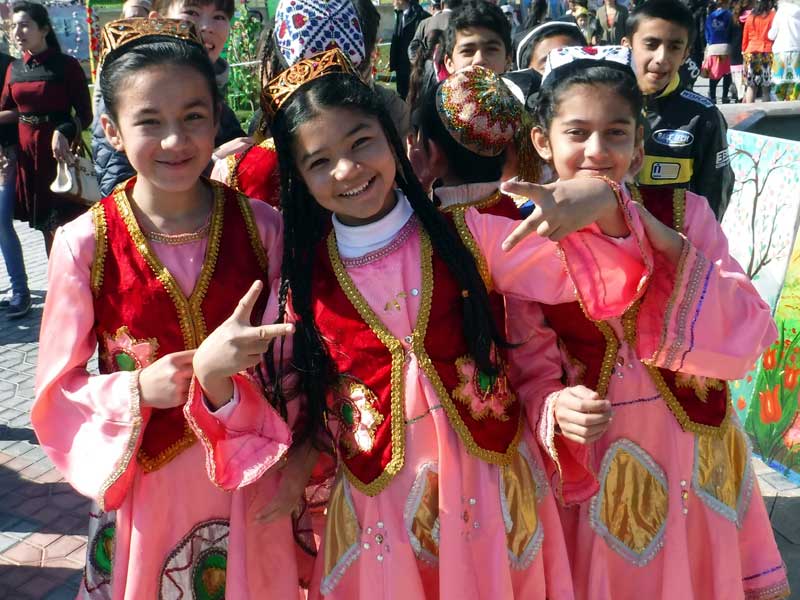
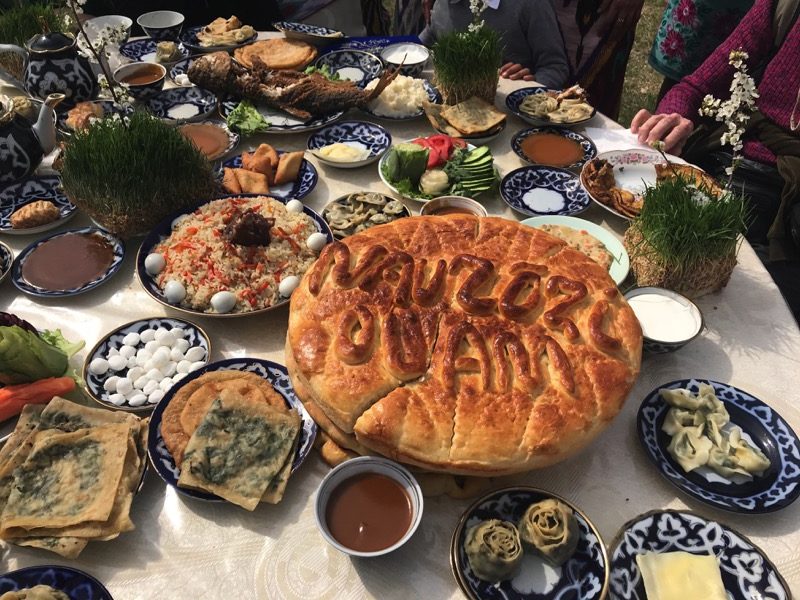
Navruz is an ancient Zoroastrian festival celebrated in Central Asia, the Middle East, and Caucasus, focused on rebirth and renewal. The date varies according to the spring equinox – typically between March 19-21 (March 20th in 2020) – and often referred to as “Persian New Year.” Families gather to clean the house, visit relatives, exchange gifts, and cook up bountiful feasts of plov – Uzbekistan’s delicious national rice dish – as well as bake special Navruz round bread stamped with colorful flower motifs.
(click on photo for larger image and caption)
* MUST-TRY:
A “Navruz-only” culinary tradition is germinating wheatgrass for a sacred dish called sumalak (“30 Angels”). It takes a week to sprout, prepare, and cook – typically with women taking turns stirring the pot all night long before Navruz begins, with joyful talking, singing and dancing to stay awake. The sweet sumalak paste is served with warm bread and tea, and said to bring joy, happiness, and good luck in the coming year.
Older Bukharans converse in typical Uzbek style: often cross-legged, seated on Central Asian carpets
Photo credit: Michel Behar
3) UNESCO SITE: BUKHARA BECKONS
Bukhara has been a prized chess piece for more than a thousand years, from the challenging politics of rival countries – think the “Great Game” between Russia and Great Britain – to earlier conquerors who set their strategic sights on this city – such as Genghis Khan and Tamerlane (Amir Timur). With its location and stunning architecture, it’s easy to understand why so many throughout history have fought, and died, for this Silk Road oasis.
Top sights in UNESCO-listed Bukhara include the Ark Citadel, Kalon (“Great”) Mosque and Minaret, and Chor Minor (“Four Minarets”).
Bukhara’s Lyabi-Hauz is an oasis within a Silk Road oasis, for centuries a place to meet, eat, and relax
Photo credit: Abdu Samadov
* MUST-SEE:
Bukhara’s UNESCO-listed labyrinthine Old Town of more than 140 protected treasures is centered around the refreshing and peaceful Lyabi-Hauz (“By the Pond”) Plaza, a social gathering place since 1620. Shaded by centuries-old massive mulberry trees, here local Uzbeks gather around the pool for tea, conversation, and – perhaps ironically – chess games.
(click on photo for larger image and caption)
Ringing Lyabi-Hauz Plaza are religious masterpieces: 16th-century Kukeldash Madrassah to the north, the largest Koranic school in Central Asia; Khanaka Nadir Divan-Begi on the west side, built in 1622 as a religious place for Sufi dervishes to rest and reflect; and the 1622 Nadir Divan-Begi Madrassah on the pool’s east side, decorated with tiles depicting a Mongol sun and turquoise mythical birds of happiness.
A favorite Uzbek dish, UNESCO-listed plov is mounded high for a festive luncheon in Tashkent
Photo credit: Helen Holter
4) UNESCO Intangible: Plates of Plov
With more than 100 variations, plov is Uzbekistan’s ubiquitous national rice dish – typically made with mutton or beef, carrots, onions, and imbued with fragrant Silk Road spices. Recognized by UNESCO as a cultural treasure, plov is more than a meal: it is Uzbeks’ ancestral food and a culinary tradition handed down from generation to generation.
* MUST-TRY:
Plov is created together and shared together, forging community and national identity that makes it worthy of UNESCO’s cultural designation. It’s created as a celebratory dish for weddings and Navruz, the Central Asian springtime holiday, as well as for funerals and prayer vigils. If you have the opportunity, listen for the sizzle and watch the steam in different stages of putting plov together.
A plate of plov is elegantly presented for a holiday celebration
Photo credit: Abdu Samadov
Sunlight highlights the magnificent blue majolica entrance portal of Muhammad Rahim-Khan Madrassah
Photo credit: Abdu Samadov
5) UNESCO Site: Khiva’s Living Past
Think of Khiva as a “wrinkle in time,” time travel back to the days of Silk Road caravans when weary sojourners stopped here for rest and refueling, and where merchants, artisans, and families live and work today just as their ancestors did centuries ago. Harkening back more than 2,000 years (legend says Noah’s son put down roots after discovering water here), the ancient Silk Road desert oasis of Khiva is often called a “living museum,” with its UNESCO-listed Old Town (Ichon Qala) of intact mosques, blue-green tiled minarets, and winding alleys.
* MUST-SEE:
Walking – meandering is even better – quickly imbues you with a feel for this town’s Silk Road past of tiled mosques, madrassahs, and markets, along with shops and age-old houses passed down to new generations of families. A mud-brick enclosure, Ichon Qala is surrounded by graceful, undulating waves of walls; be sure to climb the stairway up to the thick-and-tall city walls at Boghcha Darvaza (“Garden Gate”) offering outstanding views – especially at sunrise and sunset. A striking feature is Khiva’s oldest mosque, Juma (“Friday”) Mosque, which rests on a forest of 213 hand-carved wooden pillars – some more than 1,000 years old. Another Ichon-Qala highlight is the 1841 large, sumptuous Tash-Hauli Palace (“Stone House”), where the khan, his wives, and family once lived in more than 150 rooms surrounding nine courtyards, replete with carved woods, ceramic tiles, and majolica.
(click on photo for larger image and caption)
Other UNESCO top sights in Khiva include Kalta Minor (“Short Minaret”), Kunya Ark (“Old Castle”), and Islam Khodja Minor.
Uzbek ikat silk fabrics are bold in color and complex in design – truly treasures of the Silk Road
Photo credit: Megan Gilboy
6) UNESCO Intangible: Margilan’s Silk Road Silk
This is “Ground Zero” for silk: those who make it, and those who love this delicate, natural fabric. A major Silk Road stop since days of Alexander the Great, the Fergana Valley’s town of Margilan is the heart of some of the world’s best silk and oldest silk-weaving techniques – so revered that they are on UNESCO’s List of Intangible Cultural Heritage. Here is the home of Uzbekistan’s national fabrics: silk-and-cotton adras as well as pure silk called khan atlas, upon which utterly distinctive Uzbek patterns are created for scarves, dresses, robes, and pillows.
A silk loom stretches from wall to wall in Margilan, heart of Silk Road silk-making
Photo credit: Suresh Mehta
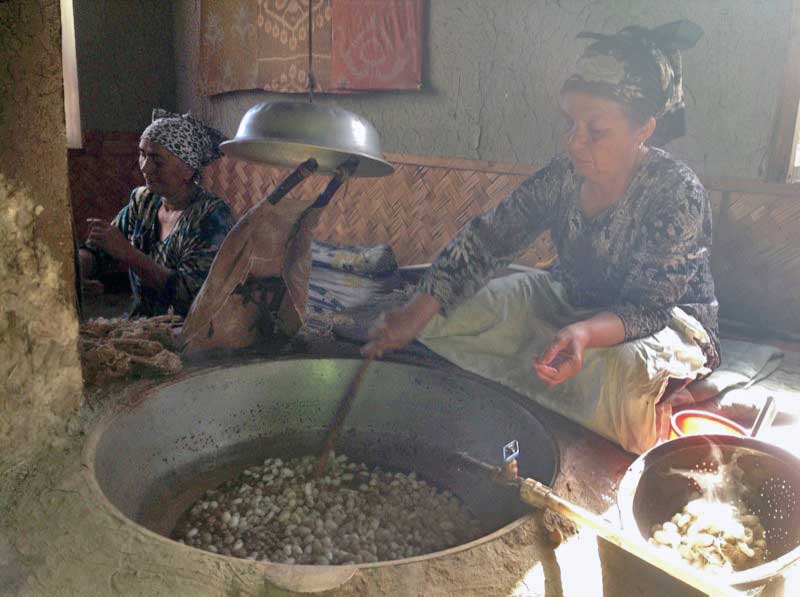
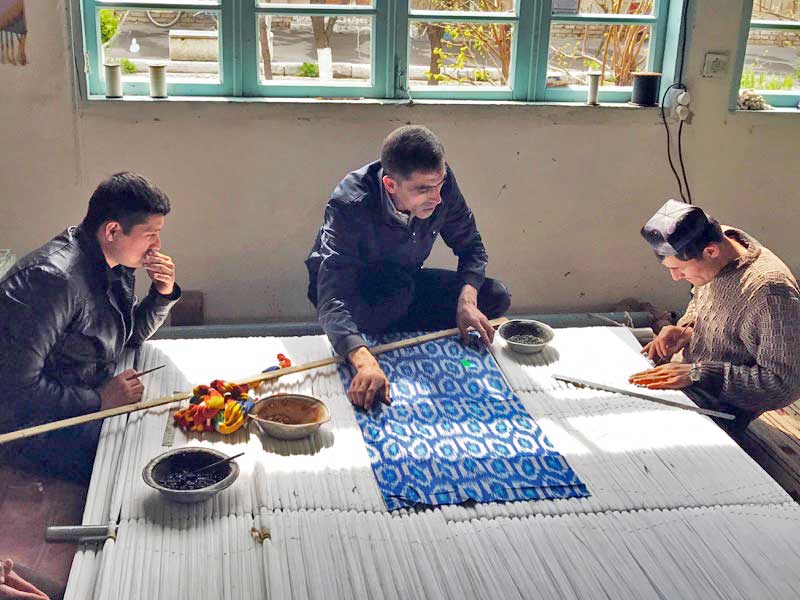

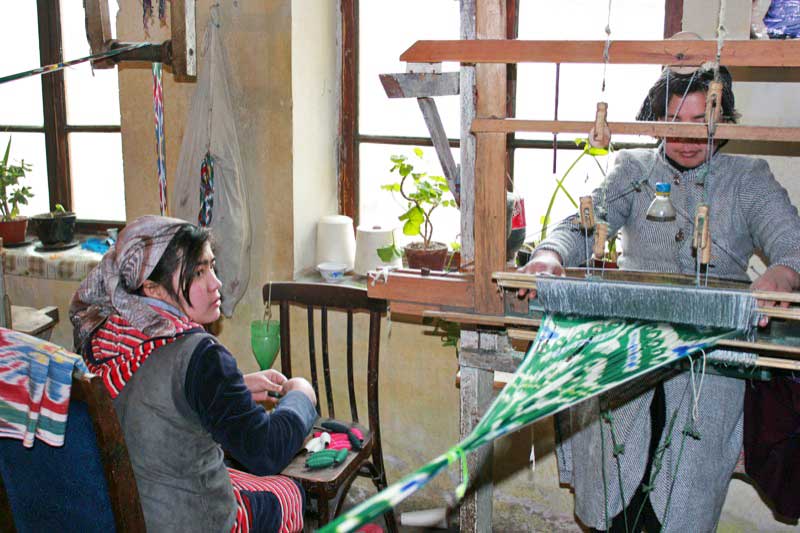
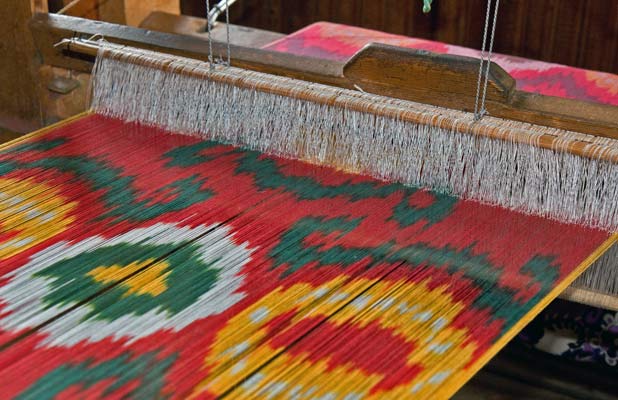
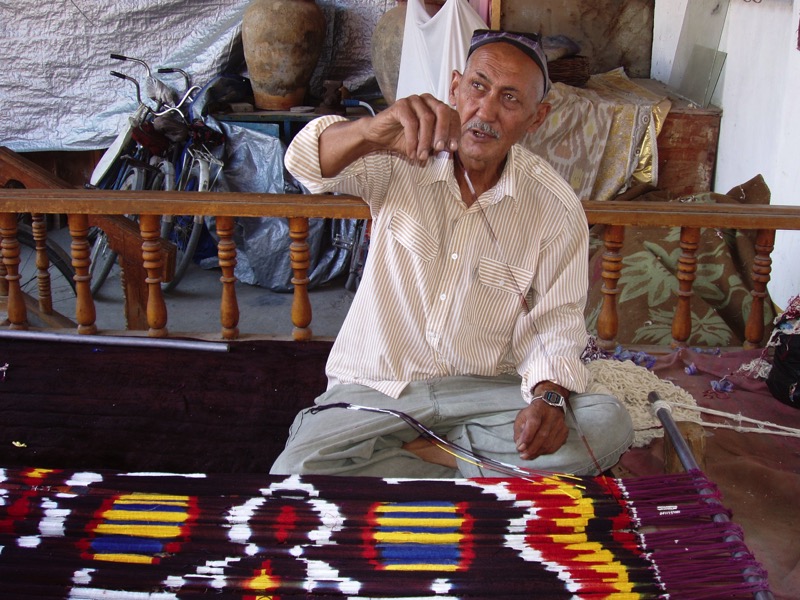
* MUST-SEE:
Viewing any part of the process of silk-making is amazing – from silkworms munching on mulberry leaves and spinning their cocoons to dip-dyeing silk threads and weaving silk fabric into cloud-like patterns on giant looms.
Tamerlane towers over the ruins of his most ambitious project, Ak Saray Palace
Photo credit: Jered Gorman
7) UNESCO Site: A Royal City, Shahrisabz
More than 2,000 years old, Shahrisabz (“Green City”) was the thriving cultural and political hub of the Kesh region in the 14th and 15th century. Yet beyond its stellar achievements, Shahrisabz is perhaps best-known as the birthplace of the great conqueror, Tamerlane (Amir Timur).
Once 65 meters tall, only parts of the blue, gold, and white mosaic Ak Saray Palace gate towers remain
Photo credit: Jens Frank
* MUST-SEE:
Still standing today are the UNESCO-listed ruins of Tamerlane’s massive 14th-century project, Ak Saray (“White Palace”), a 24-year undertaking with a massive mosaic portal that once towered 213 feet tall; today it is reduced to about 125 feet. Imagine what Tamerlane’s summer palace looked like originally, rivaling anything built in Samarkand! A relatively new statue of a strong, tall Tamerlane belies his injured right hand and leg – thus his nickname, “Timur the Lame.”
(click on photo for larger image and caption)
Other UNESCO top sights in Shahrisabz include Hazrati Imam Complex with Jahangir Mausoleum, and Kok Gumbaz (“Blue Domes”) Mosque.
Fusing vocals and instrumentals, shashmaqom music has been performed for more than 1,000 years
Photo credit: Peter Guttman
8) UNESCO Intangible: Shashmaqom Music
Uzbekistan’s music is melded from many cultures, traditions, and regions, and notably reflected in UNESCO-protected shashmaqom (“six cycles”) musical genre, a fusion of Tajik and Uzbek traditional melodies with Sufi poetry-derived lyrics, passed down orally from generation to generation. Harkening as far back as the 10th century, shashmaqom soloists or ensembles are usually accompanied by traditional instruments, including a two-stringed, long-necked lute (dutar) and doira, a large tambourine. The musical genre was once squashed in Soviet times; it’s now making a comeback as a UNESCO-listed treasure.
* MUST-HEAR:
Enjoy the soaring, Central Asia melodies of shashmaqom music in this UNESCO video.
Uzbekistan’s Silk Road generations, young and old
Photo credit: Ana Filonov
MORE UZBEK INSPIRATIONS: STORIES, PHOTOS & VIDEOS
Here are more ways to discover why now is a perfect time to travel to Uzbekistan:
“Up & Coming Uzbekistan: 7 Reasons Why A Local Recommends You Visit Now”
(Featured top photo: Timeless dawn breaks over Bukhara. Photo credit: Abdu Samadov)



